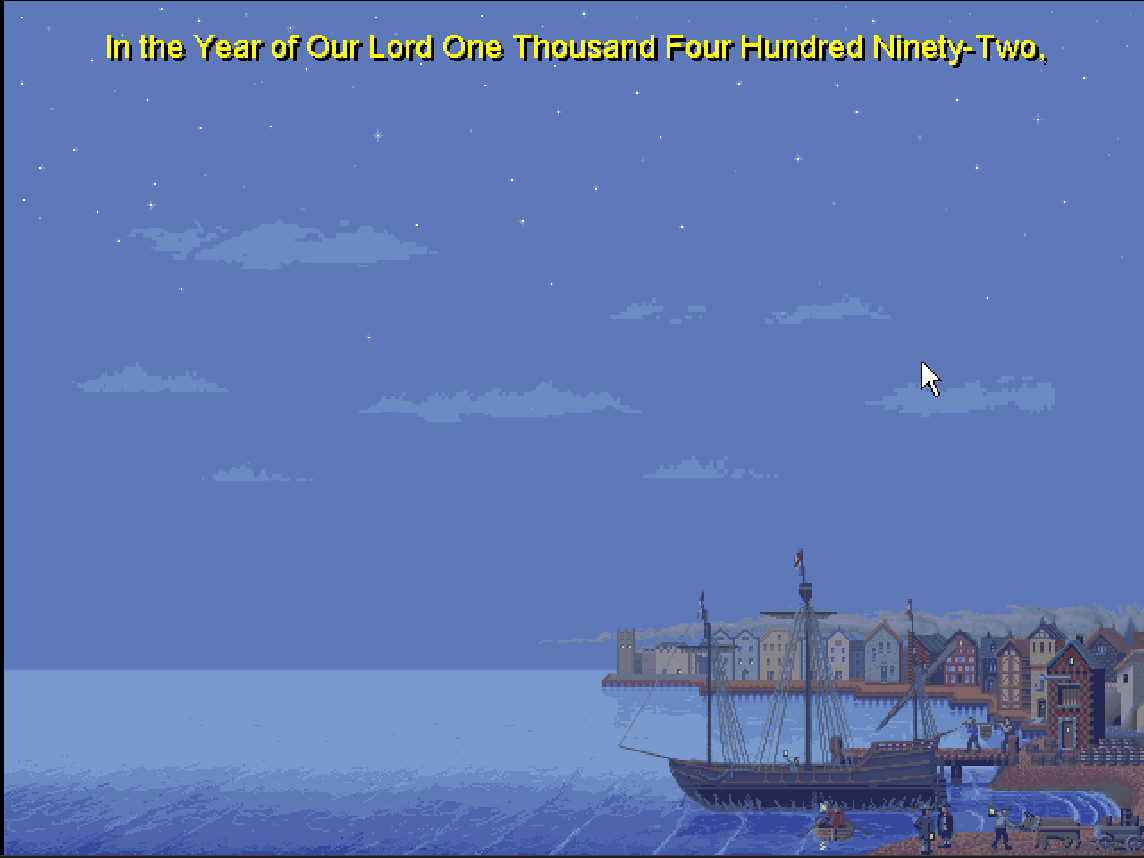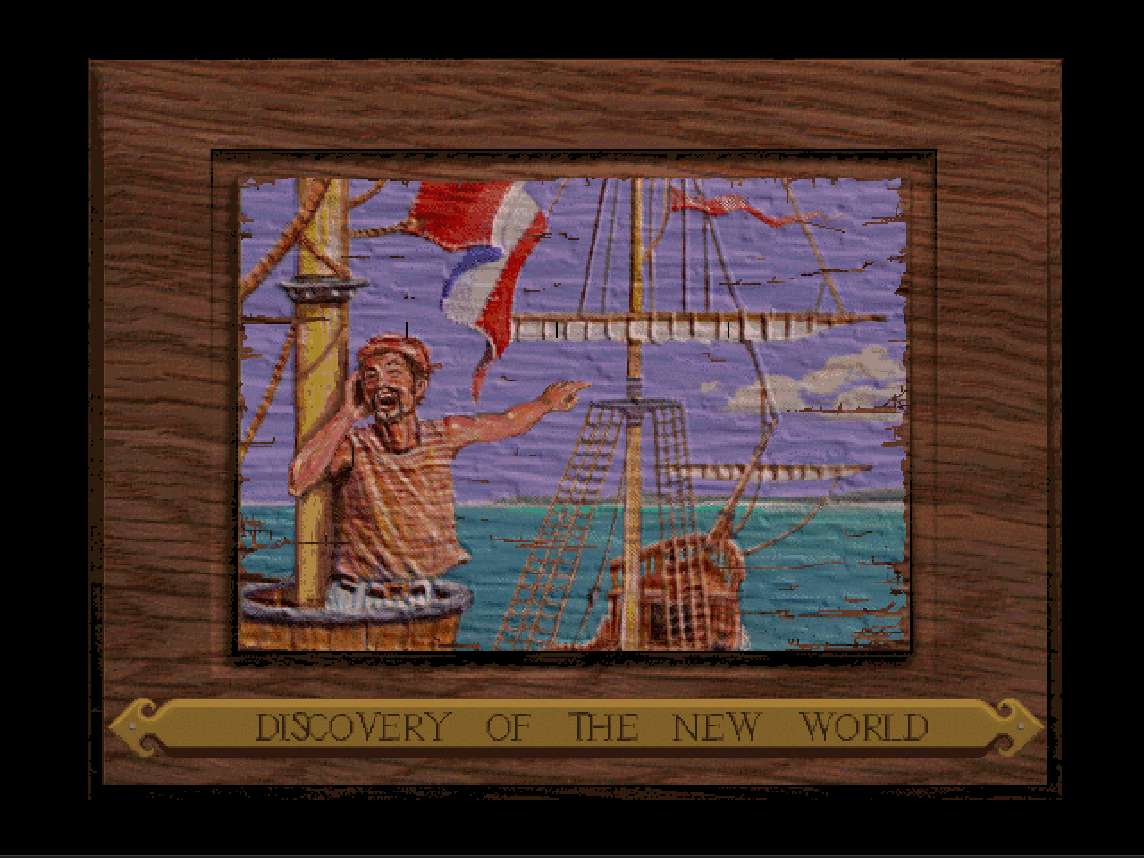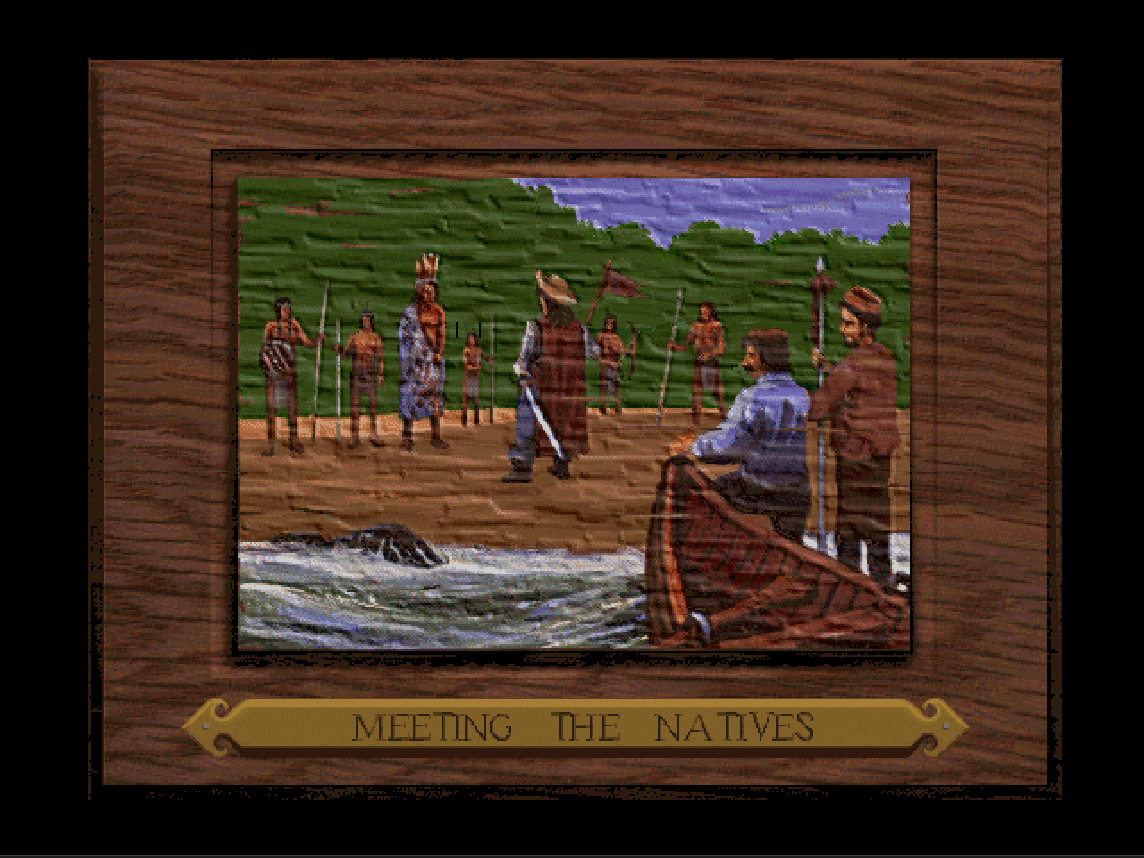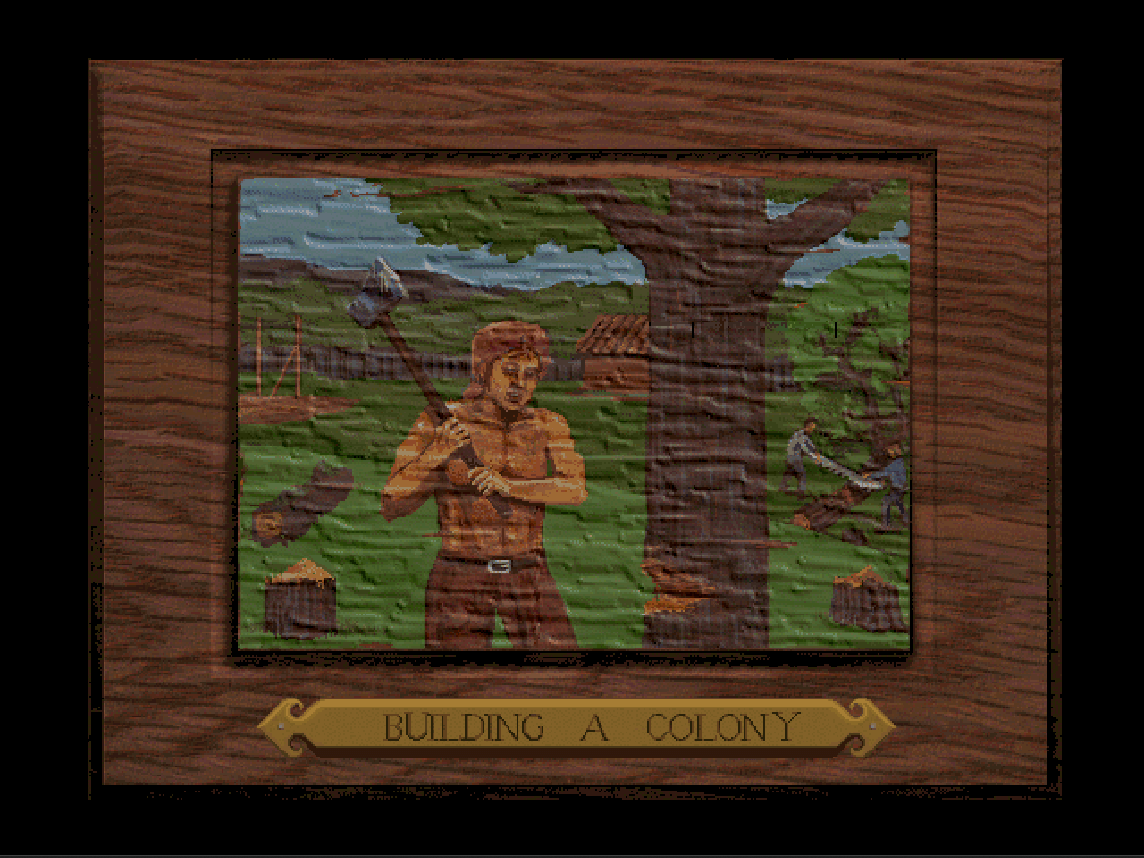- Sid Meier’s Vision
- The Unique Gameplay Experience
- Beyond the Shadows of Civilization
- Colonist Management: A Precise Art
- Economic Interdependencies
- Strategic Goals and Historical Dimensions
- The Essence of Sid Meier’s Colonization
- Struggle for Independence
- Precision in Management and Graphics
- Meticulous Colony Management
- A Visual Feast
- Conclusion
- Play Sid Meier’s Colonization (Win 3.x) online
From the exoticism of overseas discoveries to the thrill of adventure and an air of mystery, the theme has always captivated me. Picture the mariners of yore navigating wooden barks, reaching unknown shores, exploring foreign landscapes, and ultimately establishing colonies.
The notion of arriving in a paradise teeming with natural riches and beauty is undeniably enticing, akin to humanity landing on Mars or a moon of Jupiter today.
Sid Meier’s Vision
Now, imagine wanting to experience a slice of that adventure indirectly through a game. The mind races with possibilities of what such a game could entail, what one would want to do in it, and, most importantly, how the atmosphere could be impeccably captured.
Sid Meier materialized precisely such a game. For me, Sid Meier’s Colonization has always been a dream, something I envisioned right after playing Civilization.
A turn-based strategy game where I could meticulously, comprehensively, meaningfully, and believably fulfill my every desire – and Colonization is precisely that game.

The Unique Gameplay Experience
Beyond the Shadows of Civilization
Colonization is not merely a shadow of Meier’s Civilization. The initial visual impression might misleadingly suggest a similar approach, adapting graphics based on a specific historical period while maintaining the Civilization-style system.
However, Colonization’s rules are fundamentally different. Here, you don’t manufacture imaginary units using production shields; rather, each colonist is recruited and serves a specific purpose.
This contrasts sharply with the abundance of units in traditional strategy games, where the loss of a unit is inconsequential as another can be easily produced. Not so in Colonization.

Colonist Management: A Precise Art
Colonists are not created on an assembly line within colonies. Instead, you either hire them for money in your home country in Europe, or occasionally, they may offer to escape the Old World for the New World.
Once acquired, these individuals are placed on a ship and transported. Here’s the catch – you must assign them to a specific profession. You can turn them into farmers cultivating food crops, sugar, tobacco, or cotton. Alternatively, they can become miners extracting ore, lumberjacks, or hunters for fur.
The choices depend on the fertility of the surrounding colony area and the available resources. Within a colony, you can manufacture products like rum, cigars, cotton clothing, or fur clothing, employing specific individuals for each task.
Notably, you can change a person’s profession at any time – for example, from a soldier back to a fisherman.

Economic Interdependencies
The activities of these individuals impact how you sustain them through food production or what yield you get from fields, mines, and forests. If a colony lacks, for instance, a tobacco plantation, logically, you won’t produce cigars unless you import tobacco from another colony that cultivates it.
The entire economy is intricately connected, and you won’t have just one colony. You’ll establish more and more, striving to extract as many resources from the New World as possible and convert them into commodities highly valued in Old Europe.

Strategic Goals and Historical Dimensions
The Essence of Sid Meier’s Colonization
Every strategy should have a clear goal, and Colonization is no exception – the colonization of a new continent. Yet, it goes beyond that. The game has a historical dimension.
In addition to engaging in battles with traditional rivals such as the English, French, Spanish, and Dutch, players communicate and potentially fight with indigenous Native Americans.
Eventually, a war for independence from the home country that sent you to the New World awaits. Native Americans deserve a special mention – you can send missionaries to convert them to Christianity, leading to their favor and occasional gifts.

Struggle for Independence
The percentage of independence from the home country is expressed in each colony’s statistics. The goal is clear – achieve independence before your rivals. You must convince each colony through authorities and journalism that independence is superior to subordination to the crown.
Sail into the unknown, build your colonies, and navigate the intricate web of strategy. Play Sid Meier’s Colonization!
The crown periodically raises taxes, making the sale of commodities increasingly unfavorable. When the opportune moment arrives, declare independence, leading to a final battle against elite royal units that mass-land around your colonies. If you defend successfully, victory is yours.

Precision in Management and Graphics
Meticulous Colony Management
The game revolves around meticulous management and the individual colonists you carefully count. These colonists, acquired through various means, become a valuable commodity.
Without them, there is no production, and the birth of each person is not automated but a slow process, occurring when the food surplus in a colony reaches 100.
Population growth is a gradual process, and in colonies rich in iron and wood, production focuses on upgrading buildings and eventually manufacturing rifles, cannons, and ships.

A Visual Feast
The graphics contribute significantly to the overall impression, accurately depicting Caribbean and wooded parts of North America, the jungles covering South America, and the desert landscape over regions of Mexico and the western coast of South America.
On such a map, with significantly upgraded graphics compared to Civilization 1, your explorers roam, soldiers don uniforms typical for the era, indigenous people coexist, wagons laden with goods traverse the land, and ships sail the seas.
The growth of one colony after another on land further enhances the gaming experience.

Conclusion
Sid Meier’s Colonization (Win 3.x) is a masterpiece in turn-based strategy.
In summary, Colonization stands as one of the most elaborate and fascinating turn-based strategies in the history of computer games.
Rarely will you find such a finely crafted strategic concept, colony management where nothing is automated in the background, and every colonist’s activity is determined by you with the specific goal of obtaining a commodity that you will use purposefully.
Sid Meier’s Colonization offers top-notch entertainment for many hours, and its somewhat aged graphics and overall execution are not a detriment but rather an asset.
Play Sid Meier’s Colonization (Win 3.x) online
Now you can play Sid Meier’s Colonization (Win 3.x) online, in a web browser, for free!

